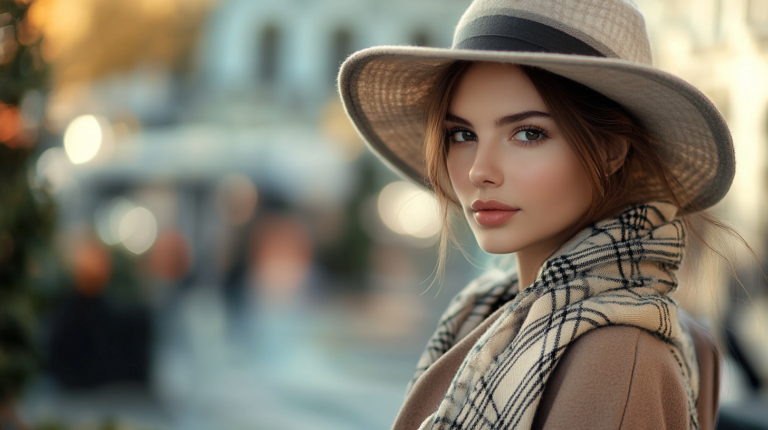Looking to understand “what is a contemporary monologue“? Look no further! A contemporary monologue is a speech delivered by a character from a modern play, film, or TV show. These monologues showcase an actor’s skills and act as a crucial tool for audition preparation. In contrast to classical monologues, contemporary monologues are derived from recently written materials and come with the context of modern society, often involving relatable themes and situations.
You Wonder What Is A Contemporary Monologue?
Contemporary monologues are essentially speeches delivered by a character in a play, film, TV show, or any other form of dramatic context, reflecting modern language and issues. Compared to the classical monologues, these pieces feature a more relatable and up-to-date narrative.
A contemporary monologue is a speech from a modern play, film, or TV show, used by actors to demonstrate their skills and prepare for auditions. Such monologues reveal a character’s journey and often touch upon modern-day issues. To perform one effectively, actors should understand the character, rehearse thoroughly, and work on their physical and vocal delivery. Contemporary monologues come in various styles, such as comedic or dramatic, and examples from famous works can serve as inspiration for actors.
Understanding the characteristics of contemporary monologues will help actors, writers, and audiences connect with the material on a deeper level. Most contemporary monologues focus on the character’s arc, showing their growth, transformation, or realization throughout the piece. This character development is essential in capturing the audience’s attention and evoking a strong emotional response.
Another crucial aspect of a contemporary monologue is its narrative. The narrative not only delivers the context of the scene but also reveals the character’s thoughts, emotions, and motivations. The themes and topics covered in these narratives often reflect relatable, present-day issues and concerns. By addressing such topics, contemporary monologues allow the audience to empathize with the characters and understand their perspective.
Types of Contemporary Monologues

As actors, we know that mastering the art of monologue is essential. But what is a contemporary monologue? Well, it’s a speech or performance piece typically drawn from modern plays, films, or television shows. There are various types of contemporary monologues, and we’re here to help you better understand them.
Comedic
Comedic monologues showcase an actor’s ability to express humor. These monologues are often lighthearted, witty, and entertaining, making them perfect for showcasing comedic timing and delivery. A well-crafted comedic monologue can leave the audience in stitches and demonstrate an actor’s versatility.
Dramatic
Dramatic monologues are intense and often emotional pieces that reveal a character’s inner thoughts or struggles. These monologues allow an actor to showcase their emotional range and ability to connect with the audience on a deeper level. Whether it’s a heartfelt confession or a devastating revelation, dramatic monologues can leave a lasting impact.
Film
Film monologues are contemporary monologues taken from movies. These monologues can be of any genre, such as comedy, drama, action, or romance. Film monologues give actors the opportunity to explore a wide range of characters, situations, and emotions while demonstrating their adaptability to various cinematic styles.
Television
Television monologues, much like film monologues, span different genres and styles. They are often shorter than monologues in plays or films, yet they can be just as impactful. Performing a television monologue allows an actor to display their ability to engage the audience in a limited time frame while drawing inspiration from popular shows and characters.
Theatre
Theatre monologues are extracted from plays and musicals. They can be comedic, dramatic, or even a mix of both. Theatre monologues can be truly transformative, allowing actors to immerse themselves in the world of the play, whether it’s a contemporary drama or a classic piece of theatrical history. Theatre monologues also provide an opportunity to showcase an actor’s physicality and stage presence.
Monologues from Notable Actors and Directors

When exploring what is a contemporary monologue, it’s essential to learn from the best in the biz. Well-known actors and directors have delivered unforgettable performances that serve as excellent examples for aspiring performers.
Mahershala Ali truly captivated the audience with his powerful monologue in Moonlight, portraying the character Juan. Ali’s raw emotions and profound delivery earned him an Oscar for Best Supporting Actor and set a high bar for contemporary monologues.
Another mesmerizing performance comes from Javier Bardem, who played the chilling character Silva in Skyfall. Bardem’s monologue in this film was a perfect blend of eerie and engaging, showcasing his ability to embody a complex villain.
Willem Dafoe is no stranger to the art of monologue, as he displayed in The Lighthouse. His character’s poetic and commanding speech was a masterclass in acting, sending chills down the viewers’ spines.
Chadwick Boseman, known for his monumental role as Black Panther, gave an emotional and fiery performance in Ma Rainey’s Black Bottom. His skillful delivery of a contemporary monologue left a lasting impression, cementing his status as an exceptional actor.
Leonardo DiCaprio‘s acting prowess was undoubtedly evident in his memorable monologue from The Wolf of Wall Street. With uncontainable energy and charisma, DiCaprio’s portrayal of Jordan Belfort left audiences captivated.
Lastly, Joaquin Phoenix’s raw and visceral portrayal of Arthur Fleck in Joker took contemporary monologues to new heights. His unsettling and thought-provoking performance won him the Oscar for Best Actor.
Effective Audition Monologues
When considering what is a contemporary monologue, it’s essential to understand how to choose and perform one effectively for auditions.
Choosing the Right Monologue
The first step in ensuring a successful audition is choosing the perfect contemporary monologue that showcases your skills as an actor. Consider these factors when selecting your piece:
- Look for relatability: Select a monologue that resonates with you and allows you to dive into the character truly. Connecting with the material will make your performance more genuine.
- Consider your type: Think about the roles you usually play or would like to play and find a monologue that showcases your abilities in those areas.
- Fulfill audition requirements: Always pay attention to the specific audition details and choose a monologue that fits the given criteria, such as genre (comedic or dramatic) or time limits.
- Originality: Aim for a less familiar monologue to prevent comparison with other performers, and to keep the casting director engaged with something fresh.
Performance Techniques
Once you’ve chosen your contemporary monologue, it’s critical to work on your performance techniques to ensure a memorable audition:
- Analyze the character: Dive deep into the character’s backstory, objectives, and emotions. This understanding will enable you to bring life to the role.
- Rehearse: Practice your monologue repeatedly to make your delivery smooth and natural. Remember, repetition helps build confidence.
- Develop physical and vocal presence: Work on your movements, gestures, and posture to fully embody the character. Additionally, pay attention to vocal elements like tone, pitch, and volume to convey the emotions effectively.
- Stay focused: During your audition, stay present in the moment and keep your focus on embodying the character. Don’t let nerves or distractions affect your performance.
Remember, the ultimate goal in choosing and performing a contemporary monologue is to showcase your abilities as an actor and leave a lasting impression on the casting team. By following these tips, you’ll be well on your way to a successful audition.
Monologues for Different Ages and Genders
Monologues for Men and Women
Contemporary monologues for men and women can vary widely in subject matter, tone, and style. They may tackle topics such as relationships, career struggles, or personal growth. These monologues typically feature characters in their late teens to adulthood. To find the best-fit monologues for men and women, consider the character’s age, background, and the specific emotions the actor wants to convey on stage.
- Men’s Monologues: Some popular plays with great contemporary men’s monologues include “Gruesome Playground Injuries” by Rajiv Joseph and “The Shape of Things” by Neil LaBute.tem
- Women’s Monologues: Strong contemporary women’s monologues can be found in a variety of plays such as “Reasons to Be Pretty” by Neil LaBute and “The Wolves” by Sarah DeLappe.
Monologues for Kids and Teens
Finding the right contemporary monologues for kids and teens can sometimes be challenging. However, there are many plays with age-appropriate material that resonate with young actors. The most crucial aspect is to choose a monologue that genuinely showcases their personalities and emotions.
- Teen Monologues: Some notable plays with monologues for teens include “A Bright New Boise” by Samuel D. Hunter, which offers multiple honest insights into the protagonist’s relationship with his dad.
- Kids Monologues: When searching for monologues for kids, consider works that deal with relatable themes such as friendship, family, and self-discovery. Plays like “Bridge to Terabithia” by Katherine Paterson and “Matilda” by Roald Dahl are great options.
Remember that the key to choosing the perfect contemporary monologue is finding a piece that resonates with the actor’s experiences and emotions. This will allow the performance to be authentic and captivating, irrespective of the actor’s age or gender.
FAQ
What are considered contemporary monologues?
Contemporary monologues are speeches from plays and other works of literature that have been written within the past few decades. They reflect modern themes and issues and are often used in auditions and acting classes.
What are the 3 types of monologue?
The 3 types of monologues are inner monologue, soliloquy, and aside. Inner monologue is private thoughts, a soliloquy is speaking thoughts aloud while alone, and aside is a brief remark heard by the audience but not other characters.
What is considered a contemporary play?
A contemporary play is typically defined as a play that was written and first performed after 1980. It is a type of theatre that incorporates art, dance, video, and other performance elements, and can be categorized by genre such as drama, comedy, and historical drama.
What’s an active monologue?
An active monologue is a type of speech in which a character uses their words to achieve a clear goal. It is a vocalization of a character’s thoughts and desires, as opposed to a descriptive monologue which simply tells a story.
If you liked this blog post about the topic: “What is a Contemporary Monologue”, don’t forget to leave us a comment down below to tell us about your experience with it.
If you want to keep reading more from us, have a look at these articles.





